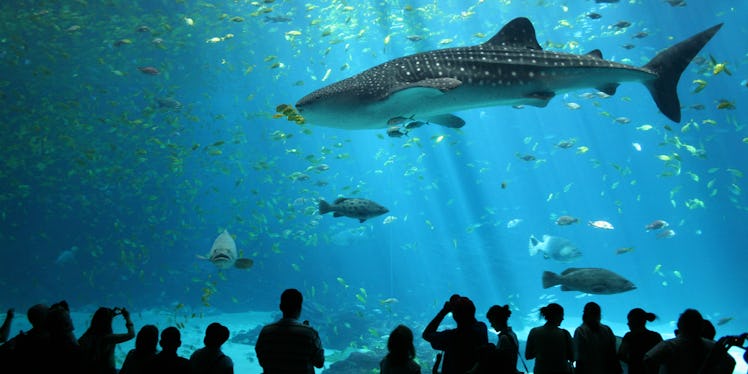Rad Women Of History: Meet The French Marine Biologist Who Invented The Aquarium
Too much history, not enough her-story.

Rad Women Of History is a series devoted to making sure your kids know that their mom wasn’t the first female badass, no matter what history books tell them.
If your kid is obsessed with Dory, it’s high time you introduced her to the woman responsible for land-based study of life under the sea: French naturalist Jeanne Villepreux-Power (1794-1871). Villepreux-Power (which sounds like a French superhero’s battle cry) was a pioneering 19th century researcher of all things cephalopod (octopuses, squids, and cuttlefish). But before she got wrapped up in the world of bilaterally symmetrical, tentacled mollusks, she came from humble beginnings as the child of a shoemaker in central France.
Villepreux-Power career started about as far away from science as you can get. At age 18, she moved to Paris to become a dressmaker, and made a name for herself designing a wedding gown for Princess Caroline in 1816. Two years later, she married an English merchant and moved to Sicily. There, she reinvented herself as a self-taught naturalist and began performing experiments on animals that lived above and below the water.
In marine biology circles she’s known as the “The Mother of Aquariophily.” It sounds like a Harry Potter spell (“Aquariophily, wand!”), but it’s actually the study of aquatic animals and plants in an aquarium. In 1832, she became the first person to think “Hey, you know what would look cool in this glass tank? Fish.” Then, she became first to inventory and study marine ecosystems in a controlled environment. She invented 3 types of aquariums: One made of glass to study live mollusks outside of the sea, and 2 others that could be anchored to the sea bed.
She wasn’t just looking at her fishy collections and singing, “Look at this stuff. Isn’t it neat?” She inventoried the entire ecosystem off the Sicilian coast. One of her best-known accomplishments was proving that the paper nautilus Argonauta argo (a cephalopod that’s kind of like an octopus) produces its own shells, instead of acquiring them from another organism like hermit crabs. This had been debated since Aristotle’s time — until all those guys in robes basically said, “Agree to disagree.”
If it hadn’t been for a tragic accident at sea in 1843, Villepreux-Power might be getting more play in the life sciences textbooks. Most of her records and scientific drawings were lost in a shipwreck when she and her husband moved from Sicily. She lived — and kept writing — but discontinued her research. She also had the most metal excuse for losing her homework.
Still, those early discoveries helped her gain membership in some of the world’s most prestigious learned societies: In 1832 she was recognized as the first (and only) female member of Catania Accademia from 1832-1842. She was also a correspondent member of the London Zoological Society and over a dozen other academies. And she has a crater on Venus named after her.
For all those times in your daughter’s life when she feels like she’s not invited to have a seat at the boys’ lab table, it’s good to remember that Villepreux-Power was the woman who broke the glass ceiling … with a glass fishbowl.
This article was originally published on